#5IMAG007W
Explore tagged Tumblr posts
Text
Human Perception of the Universe
The universe is a subject that has always been a matters of interest to the human being since its first appearance on Earth. According to science, everything started from the explosion of a small atom around 13.7 billion years ago, the famous Big Bang, which, in simple terms, spread an enormous quantity of Hydrogen and Helium across the Space. Due to the presence of gravity, these gases eventually condensed in the form of clouds which growing more and more thicker transform themselves in to what we call stars. As they expanded, a multitudinous of new galaxies originate and today we know that the universe is still continuing to widen and transform itself. Our ability to see through the sky and observe its changing is due to the peculiar composition of the universe: the space between stars and planets is empty and for this reason light can easily travel around at its incredible high speed (299 792 458 meters per second). We will always continue to study the firmament in all of its aspects and the main reason that feeds our curiosity is the fact that the universe has great influence on our lives on Earth. To provide some examples, the hormonal cycle of women is regulated by the moon phases and there is a whole science (despite not being accepted by everyone) called Astrology which beliefs that our behaviour is regulated by the movement of planets according to our date of birth. These concepts generate questions about ourselves as human beings and our origins, questions that in spite of today’s technologies and knowledge, we are still not able to give an answer to.
Regarding the interpretation and the research about universe, many sciences were born as attempt to give an answer to those great questions; among them there is Astrology (above cited), Philosophy and Astronomy, which is consider to be the “oldest science”. Since the development of the first civilizations, men have looked at the sky interrogating themselves about what they were looking at. In order to better examine the canopy above their head they started to build the very first observatories designed to facilitate their view of the heavens. Among the most famous ones still existing there are El Caracol in Chichen Itza, Mexico, the temple of Machu Picchu in Peru, Stonehenge in the UK which is far the most ancient; it was constructed between 3000 and 2000 BC and it is composed by two concentric circles of gigantic monoliths and trilithons. Despite the mystery which surrounds this peculiar place and the various debates about its original function, it is sure that it was erected for some ritual purposes: it presents two entrances, both aligned to the sunset of the winter solstice and the opposite one to the sunrise of the summer solstice. This structure suggests the use of the site as a some sort of specola where the ancients used to predict celestial events. Stonehenge is the demonstration of the human knowledge about the Space since the earliest of time.


Civilities like the Babylonians, managed to compose a detailed and accurate catalogue of a multitude of stars which is still consulted nowadays. In India, some astronomers were able to theorise the rotation of planets around the sun, even though they also believed that the Earth was the centre of the universe. The old Chinese dynasties used the movements of sun, moon and stars to organize their calendar and thy succeeded in guessing the presence of “guest stars” (a variation in the number and/or position of already known constellations). Again, Maya were already aware about the moon phases, the eclipses and what we now call the Milky Way; the Egyptians believed in the existence of not one, but various heavens and discovered the presence of the North Star toward which they built pyramids. It is common, in fact, to find tables regarding the Cosmo inside pharaohs tombs which represented a guide for the afterlife. Notable are the illustrations and mosaics belonging to the islamic world about the firmament and its mysteries, but the very first “scientific” representations of the universe are attributed to two of the greatest philosophers of all time: Plato and Aristotle. In his Theory of Forms, Plato suggested that the truth lies only in our minds and so that reality is actually everything we can imagine, instead of what we see on the outside. Starting from this concept, he described the Cosmo as a whole spherical body (the most perfect among the geometrical forms) which is divided in to circles, each of which carries a planet or a star and whose movements work all together as a soul, in the most harmonic way. Aristotle, on the other hand, stated that every single body, celestial or not, belongs to one of the four elements (earth, water, air and fire) and its movement is not due to the influence of another one but rather is an intrinsic characteristic. The philosopher also explained that heavenly bodies are made of a more perfect substance than all earthly objects and because of their perfection, they must be spherics. Therefore, according to this idea, the universe is composed by concentrical spheres that navigate in a circular way around the imperfect Earth. His theory, explained in his most famous paper On the Heavens, has been accepted for over eighteen centuries, until Nicolaus Copernicus argued that it is actually the Earth which moves around the Sun, at the beginning of 1500.
There is a big chronologic gap between the theories of the ancient Greek thinkers and the new interpretations about Space of Medieval times; this had certainly something to do with the birth and development of Christianity. As a matter of fact, the new religion resulted to be very conservative regarding science knowledge and it did not give too much space to new discoveries or confutations; nevertheless, there has always been a strong connection between Cosmo and the divine. In 1308, a poet wrote a very personal and unique interpretation of the Vault of Heaven, his name was Dante Alighieri. The Divine Comedy is divided in three parts: Inferno, Purgatorio and Paradiso, where the author makes a very detailed description of how the Heaven is structured. In his vision, loyal to the Church teaching, the firmament is split into nine concentric skies, each of which encloses a heavenly body; outside those spheres there is the empyrean, a kind of empty space house of the angels and God. This idea, even though was not recognised as a proper theory, was well accepted and welcomed by the Church.
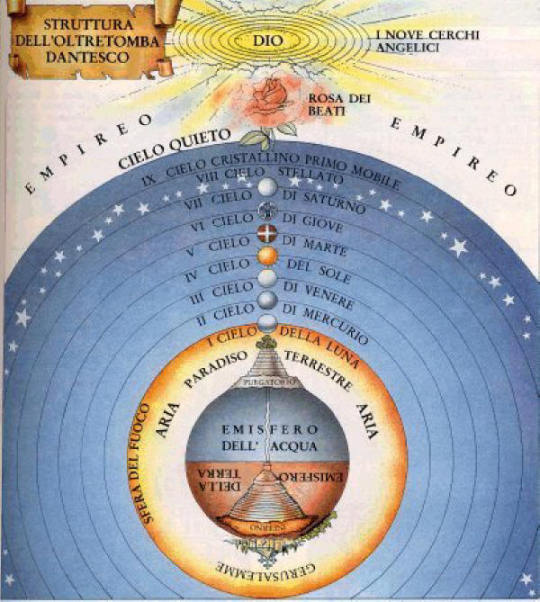
It wasn’t until the revolutionary discovery of Copernicus, two hundred years later, that the human view about Space changed. The scientist designed an astronomical model by which the sun was at the centre of the universe instead of the Earth, as the Ptolemaic system suggested. He was concerned about the planets movement; he noticed that while the sun rises and sets always in the same positions, the other planets don’t, so they must follow a different path and the Earth with them. This theory, called the Copernican heliocentrism, changed forever the concept of human life: we are no longer the centre of everything, but only a small and quite insignificant part of it. Supporting Copernicus, another physicist tried to prove the view of the revolution of planets around the sun, Galileo Galilei. In 1609, he heard about Hans Lippershey invention, the spyglass, a device composed by two lenses mounted at some distance, which was able to magnify things if looking through it. Galileo started working on an improvement of the design, as a result, he eventually created the very first telescope and several others followed. Thanks to them he was able to look at the sky in a more sophisticated way and make some of the most important scientific discoveries of the time: the moon has not a smooth surface but it shows craters and hills, Jupiter has satellites that revolve around it just like the Earth, the Sun is covered by sunspots and he improved the knowledge about Venus and Saturn. These new conclusions inspired more astronomers to make their contribution to the astrophysics research. During the same years, Johannes Kepler started studying the human eyes to better understand how they work and so to imitate their structure for the creation of more precise telescopes. From his studies, he get the idea of producing hyperboloidal lenses which would have donate a larger field of view and a better resolution to the image, instead of the classical spherical ones; the aim was to cancel aberrations due to the smearing of light rays (a distortion, to be more clear); despite his attempts, the problem wasn't solved. Some time later, a great mathematician and physicist, Rene Descartes, tried to combine together hyperboloidal and elliptical lenses; he succeeded in canceling spherical aberration, but he introduced a chromatic one: different colours were focused at different points on the lens generating halos. The definitive solution was gained by James Gregory, who, three hundreds and fifty years ago, already put the basis for today’s telescopes manufacture. The astronomer made use of mirrors instead of lenses which would have given sharpness to the image in every point. Two mirrors were installed inside the tube, one concede and the other ellipsoidal; the primary concave mirror reflected in to the second one, which let the light pass through a hole and then back to the first mirror where the image would be focused. After Gregory’s machinery, a variety of lots of new instruments were designed to explore the universe in different ways: the Sextant, for example, was nautical “gadget” which measured the distance of two visible heavenly bodies and their altitude as well; around 1845, Lord Rosse built a 54 feet long tube and a six feet long mirror, which absorbed enough light to almost see other galaxies and that was considered to be the largest telescope ever created.
Along with the birth of photography, scientists have questioning themselves on how to use the new medium to record their discoveries, even in the astronomical field, of course. Despite some attempts, such as the Kew Photoheliograph (the first successful astronomical instrument specifically designed for photographing celestial objects, mainly the Sun), it wasn’t until the World War II, that men managed to launched objects into Space and photographic instrumentation with them. The Germans, in fact, initiated a great development in the field of astronomical technologies which was carried on by the Russians and the Americans in the following years. In 1990, the Hubble Space Telescope (from the astronomer Erwin Hubble) was launched; built in 1970s with its 2.4 meters mirror can detect also the UV and the infrared rays and produce a great number of high quality images. This huge and versatile space telescope is still operating and it is giving us a deeper understanding of the world we live in.
Nowadays, we have achieved a profound knowledge of the firmament thanks to those spasmodic research; we know what all the celestial objects are made of, we know how the stars originate and we know how the the whole universe was originated, we can also make waves calculations to determine the position and the shape of heavenly bodies without actually looking directly at them. We know, by now, that universe is far larger than our Milky Way, but we still cannot go beyond it. Photography became an essential tool for the astronomic research since 1946, when from an old Nazi v-2 ballistic missile we get the very first photograph of the Earth taken from the Space itself.

As human beings, we build machines which, somehow, repress our incredible limitations, but in spite of all contemporary technologies we are not yet capable of fully understand the secrets of universe and give an answer to those big questions about our origins; we can only accept our ignorance and continue to try feeding our innate curiosity.
1 note
·
View note
Text
How visual deficiencies influence our perception of the world
Beyond Perception
Here are my five images for the practical project for the Beyond Perception module. The main aim of the project is to represent, in the most realistic way as possible, the reality that visual deficiencies make us experience every day. I interview a series of people to understand deeply what it means for them to coexist with those limitations, how they feel about them, if those visual problems play as obstacle in their everyday life, in their relationships, in their jobs or studies. The reason why I have decided to analyze this topic is found in the main aims of the module: I wanted to merge my artistic experience with the scientific module I was taking, and since my essay is deeply analyzing all the different aspects of light and the way it influences the way we focus, see images, perceive reality, I wanted to reproduce the distorted environment experienced by a certain type of people. In order, I represented: Astigmatism (the inability to focus), Presbiopia (the inability of seeing or reading things close to the eyes), Color blindness (the inability to see certain colors) , Diplopia (also know as double vision) and Myopia (the inability to focus something in the distance). Concerning the display of my images, I would like them to be printed A0 (841x1189 mm) and to be displayed one per wall, low enough to allow the viewer to enter the reality I represented, to feel it and understand it clearly.

Astigmatism

Presbiopia

Color Blindness

Diplopia

Myopia
#5IMAG007W.1#beyond perception#practical project#How visual deficiencies influence our perception of the world
0 notes
Photo

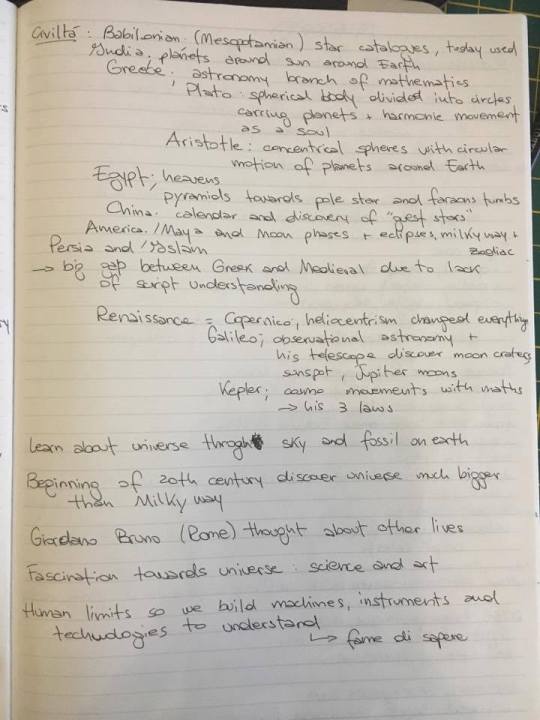



Essay research on Universe, Astronomy and Telescopes
1 note
·
View note
Photo
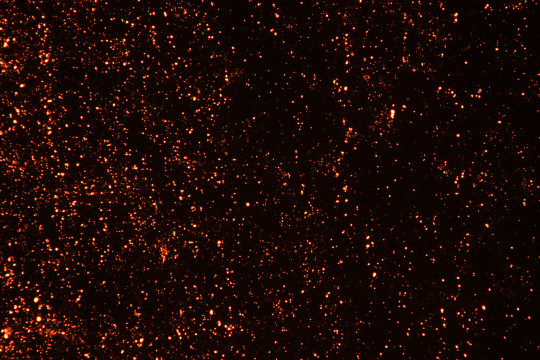
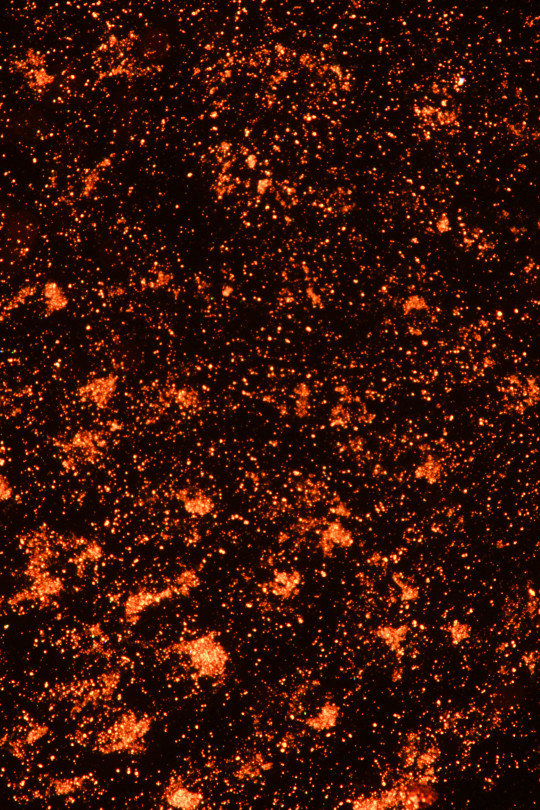

Final images for the practical project
“To see a World in a Grain of Sand And a Heaven in a Wild Flower Hold Infinity in the palm of your hand And Eternity in an hour...”
-William Blake
1 note
·
View note
Text
Photographic project
“To see a World in a Grain of Sand And a Heaven in a Wild Flower Hold Infinity in the palm of your hand And Eternity in an hour...”
The practical project for the module Beyond Perception has been quite challenging. I decided to work on scale straightaway by covering what human eyes cannot normally see: the infinite small and the infinite big. Regarding the essay I chose to research some aspects of the universe and how we perceive it as human beings, while for my photographs, at first I wanted to explore how information travel inside something like molecules or circuits by producing a time lapse. I gave up the idea quite soon because the project was almost impossible to realise due to the limitation of time and technologies. Then I was suggested to work on identity which would have made a good link with my written report. I started to experiment with fingerprints, which represent identity in an excellent way and I found myself fascinated at once. Because traces of fingerprints are not detectable under normal conditions, I need to make them more visible, I chose to use fluorescence: I put my finger on a slide and then I contaminated the fingerprints with some magnetic fluorescent powder used also by police; in order to make them “shine” I illuminated them with a portable UV lamp and then I took picture directly from the microscope with a Canon DSLR. This operation appeared to be not as easy as I thought, some issues emerged: I needed to focus the image directly from the camera which did not replicate the images as they would have resulted afterwards, moreover I had to hold the UV lamp and press the shutter at the same time being careful not to move anything. I could use the lamp only for a short time because it heated very quickly and the whole dark room with it (furthermore it is not advisable to expose the body to UV rays for a long time). Despite all the difficulties, the first pictures were beautiful and powerful; they didn’t look like fingerprints but more like constellations and so I decided to continue on this path in order to produce a work both practical and written that would have strongly linked together. Among the various colours of the powders, I chose red because it reminded me of blood and so the work that police does with fingerprints.
I chose this course because I wanted to challenge myself. I have never been really interested in science subjects, but I decided to give them a chance and this module represented the perfect collaboration between art and science. I have learned a lot about different approaches towards photography and now I am really glad I chose this module. Unfortunately I also encounter some troubles: firstly the amount of work was maybe to consistent for the short time available and I wasn't able to organise myself properly, secondly I was almost shocked by the lack of people during the lessons. We were always very few and not too collaborative as well, this has been maybe the principal reason why I didn’t feel inspired for the whole beginning of the module. This is a splendid course full of possibilities, but it certainly needs to be filled with people that interact with each other.
The title for my project is a quote from William Blake’s Auguries of Innocence, which I find to explain perfectly my intentions.
-On the whole, I spent 7 days (170 hours) working on my practical assignment and 4 days (100 hours) on my written report.
0 notes
Photo

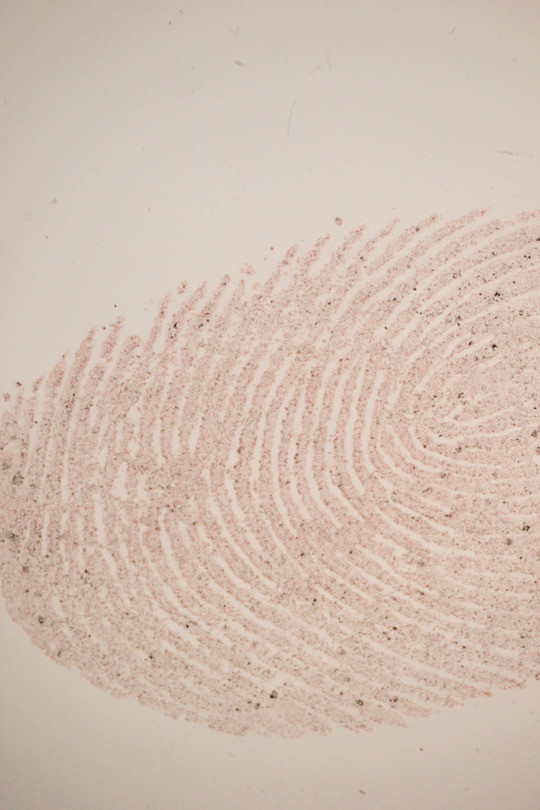

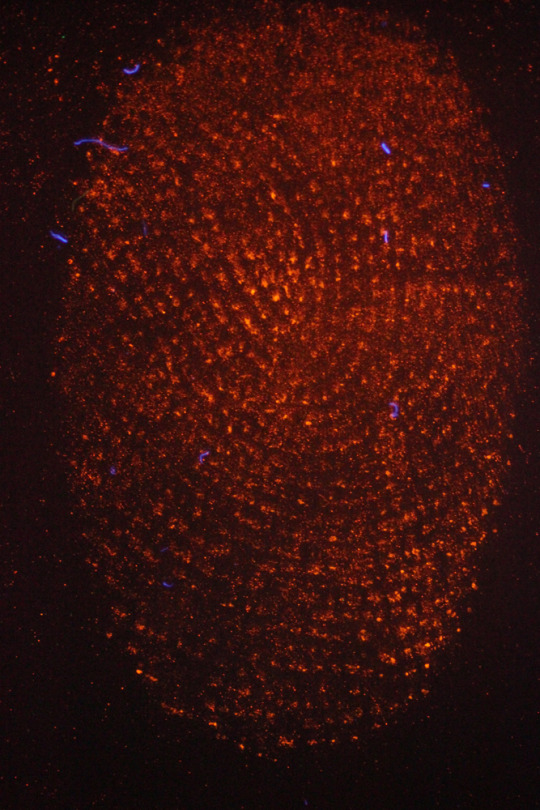
Third shooting in the laboratory for the practical project about fingerprints.
Technical notes:
-low power microscope
-camera Canon EOS 550D
-RGB colours
-magnetic fluo powder red
0 notes
Photo




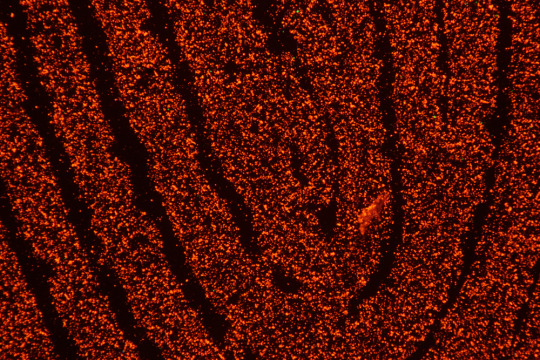
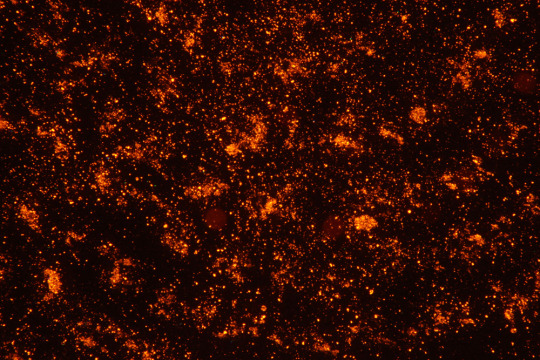

Second shooting in the laboratory for the practical project about fingerprints.
Technical notes:
-microscope Zeiss Primo Star, high power
-lenses; 40x (0,65) 10x (0,25) 4x (0,10)
-camera Canon EOS 550D
-RGB colours
-magnetic fluo powder red
0 notes
Photo

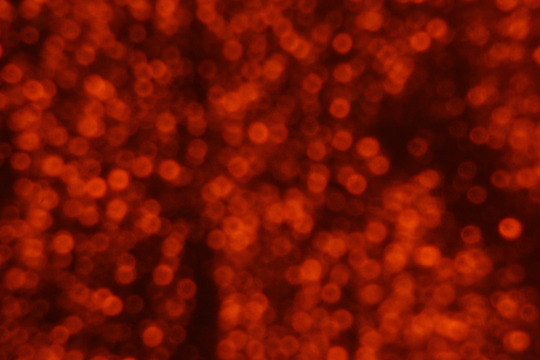
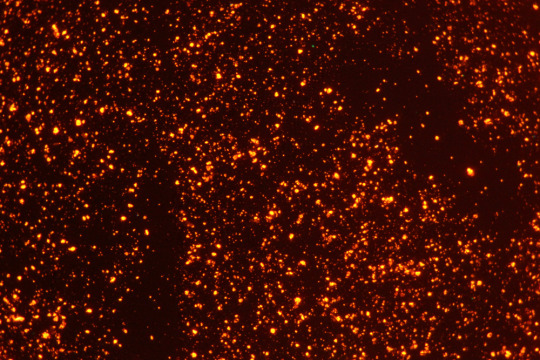

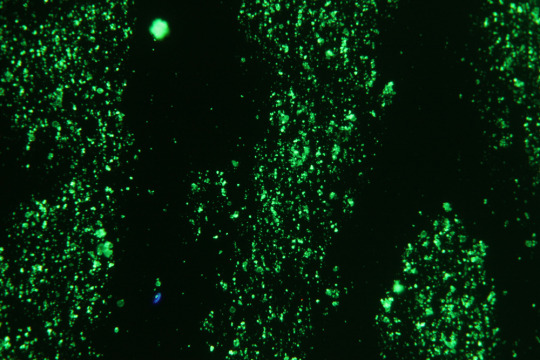
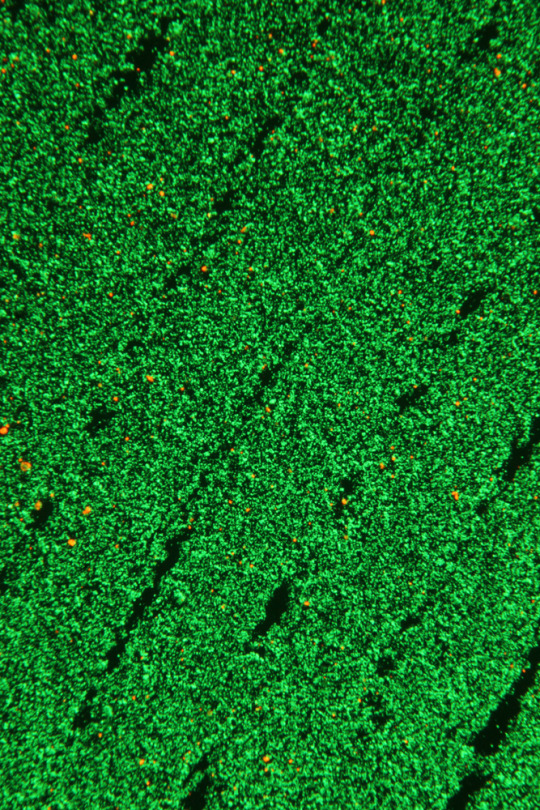


First shooting in the laboratory for the practical project about fingerprints.
Technical notes:
-microscope Zeiss Primo Star, high power
-lenses; 40x (0,65) 10x (0,25) 4x (0,10)
-camera Canon EOS 550D
-RGB colours
-magnetic fluo powder red and green
0 notes
Text
Microscopy and Fluorescence
3 types of microscope: Brightfield (most common), Darkfield, Fluorescence
Fluorescence: ability to absorb electromagnetic radiation at a certain wavelength and to emit a fraction of the energy absorbed as radiations of a different and longer wavelength.
The energy of light absorbed by an object is dissipated as heat or light of a different colour (different frequency or wavelength); in the case of UV, the rays excite the material which reacts emitting fluorescent light.
Fluorescent materials cease to be bright as soon as the light source stops to work.
The fluorescence can be direct (from a fluorescent material) or indirect (from a non fluorescent material contaminated with chemicals).
(From lectures of Università Statale of Milan and Pavia, faculty of Pharmaceutical Chemistry and Biotechnologies)
0 notes
Text
History of fingerprints
Fingerprints:
-means of personal identification (governments, police, criminals)
-there are no two identical ones
-face characteristic change with age, fingerprints don’t
-before photography police could only rely on memory
-end of 1800 Bertillon method (measurement of facial features and body parts)
-ancient times, used for commercial purposes (Babylon, China, Persia)
-mid 1800, sir Herschel collected fingerprints
-1600 England born of Royal Society
-Bidloo, Malpighi, Mayer, Purkinje contributed to the development of this practice
-Taylor speculated about using it for criminal hunting
-Faulds started to classify them by selecting the left thumb and forefinger
-used for signature as well
-with 20th century police started officially to use them to identify criminals
-after war, America started to computerise them (FBI)
-IAI international association for identification
-today is used even palm and iris
(From http://www.onin.com/fp/fphistory.html)
0 notes
Text
Visit to the Science Museum
This morning I went to the Science Museum for the first time and it has been an amazing experience. I have never quite liked scientific subjects, maybe because I have never really understood them, but I decided to push myself and I thought that an interactive museum would have been a more interesting and, why not, fun way to do research. There are so many objects exhibited, divided by different themes and each of them catches your attention as soon as you look at it. Despite the enormous variety of things to see, I came to do some research about my essay on universe for the module Beyond perception, so I visited two exhibitions on the subject: Cosmos and Culture and Exploring Space, which comprehended a section about Einstein Legacy. Both of them were much about the technologies we invented and use to navigate Space. There were original objects from the past, like small pieces of rockets or telescopes, and lots of replicas as well. Despite my ignorance on the subject, I found myself more and more curious as I walked through the rooms and I felt like I have learned a lot from only those few hours spent inside the museum. Even though the general atmosphere was quite severe, I perceived something very artistic in the way objects were disposed and illuminated.

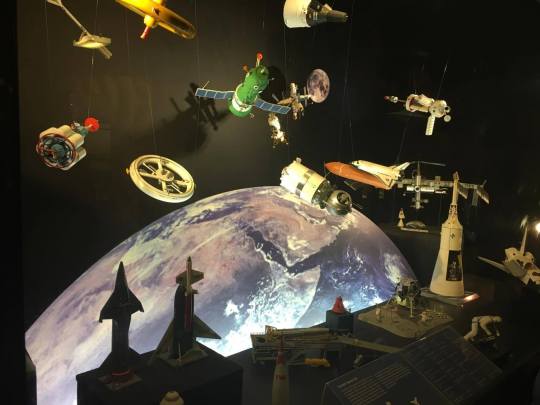

(A piece of moon rock from Apollo 15 expedition in 1971)
1 note
·
View note
Text
Beyond Perception Tutorial
Today I had the tutorial about both the photographic project and the essay for the module Beyond Perception. Although I have always been sure about what would have been my approach to this new subject, I found this morning talk very useful. If the module’s name is Beyond Perception, that means we have to actually go beyond what we normally perceive of the world. I have learned to use new technologies in order to capture things that we cannot normally detect with our bare eyes, because to small, to fast…. I knew I wanted, somehow, to research two aspects of the same theme: the scale; in my essay I will discuss the infinite large and in my practical project I will explore the infinite small. The subject of my essay will be the universe, more specific the medium we have to study it and the way that this affects us as human being. If this topic was accepted by the tutor straight away, the one regarding the photographic project resulted to be very difficult to realise: I wanted to record how the informations travel inside a body or an electric wire, but that required incredible precise technologies and so it will have been impossible to put into practice. I have been suggested, then, to concentrate myself on human identity to connect it with my essay. I will work with fingerprints, something that define a human being better that anything else. I will still work with the microscope and I will use some powders and a UV lamp to make the fingerprints fluorescent, and so better visible. On the whole, I have been given lots of material to work on and I am more than curious to start experimenting.
0 notes
Text
The Infinite Mix
The opening of the first creative space ofThe Store (a peculiar building in Berlin which brings together the creativity of fashion and furniture designers, musicians, books authors, artists and also cooks), was inaugurated in London in September with the curious exhibition The Infinite Mix. The immense building is divided into ten different spaces/studios, each of which hosts the work of one artist. The pieces of art were videos of a very diverse nature: music videos, theatrical performances, documentaries, experimental films; what they all have in common is the crucial presence of the sound related to the subject, it was either music or just someone talking.
I found particularly interesting the work of two artists: Rachel Rose and Ugo Rondinone.
Rose’s video is called Everything and more (2015) and records the experience of the US astronaut David Wolf who talks about the expedition taking in to consideration the emotion of looking down on Earth from space and his feeling of disorientation when he returned home. We cannot see the man’s face, the video is instead composed by some galactic images obtained with an air compressor which intervenes on food liquids and others taken in a neutral buoyancy laboratory, the place where astronauts prepare themselves for the space conditions. The movie is projected on a fabric screen leaned on a vinyl-covered window which constantly changes from opaque to transparent. There is a strong relation between the macro and the micro which depict the concept of a man (small) immerse into space (huge) and the disorientation we experience is meant to be a recall to that of Wolf’s.

Ugo Rondinone’s work is something very different and, in a sense, more direct. Thanx 4 Nothing (2015) is a 25 minutes film that involves another piece of art: we can see the poet John Giorno performing his own poem Thanx 4 Nothing, which gave the name to the installation as well. The composition was written on Giorno’s 70th birthday, it recounts about his life and the elements that have been shaped it. More specifically, he gives thanks to “everyone for everything” and narrates of some friends death, of sex and lovers, betrayal and of his periods of depression. There are four-channel video projections and 16 black and white monitors on the ground, the poet wears a tuxedo and he is standing bare feet on an empty stage in the Palais des Glaces theatre in Paris. The images are made of both intimate close ups and long shots; Rondinone’s aim was to point out Giorno’s humour and passion both present in the beautiful poem.

On the whole, the exhibition was both entertaining and stimulating, it made the audience experience the potentially of moving images and sound in an innovative way.
#5IMAG001W#BeyondTheFrame#5IMAG007W#BeyondPerception#5IMAG016W#AdvancedMethods#FurtherResearch#TheStore#TheInfiniteMix#RachelRose#UgoRondinone
1 note
·
View note
Photo

Infrared camera
Beyond Perception: Art and Science collaboration
Photoshop editing; digital effect of the Kodak high speed infrared ektachrome film mainly used during the World War II to sight the enemy soldiers among the vegetation. The green of their uniform would stand out, while the green of the plants would become pink thanks to the peculiar composition of the infrared film.
The human visible spectrum goes from around 390 nm to 700 nm wavelength (of light) or from 430 THz to 770 THz if we consider the frequency. This interval comprehend the range of colours we can normally see with our eyes, the seven rainbow colours to be more clear. When we talk about radiations, we intend those colours which have either a longer or shorter wavelength than the visible spectrum and so that we cannot perceive (like X-ray for example). In order to make them visible to us, we need to avail ourselves with special instruments able to capture them and make them detectable to the human eye.
Considering the infrared rays we only need a camera sensible to them: actually, all digital cameras “are born” to be sensible to the infrared, but a filter on the sensor it is installed in order to block all the infrared rays and let only the visible ones pass. Therefore it is possible to record infrared rays only by using a camera without that special filter. To take pictures, one need to shoot two identical images, one with a filter that blocks the visible light on the lens and the other with a filter that blocks the infrared. Then it is possible to combine them on photoshop working with the colour canals of red, green and blue.
0 notes
Photo


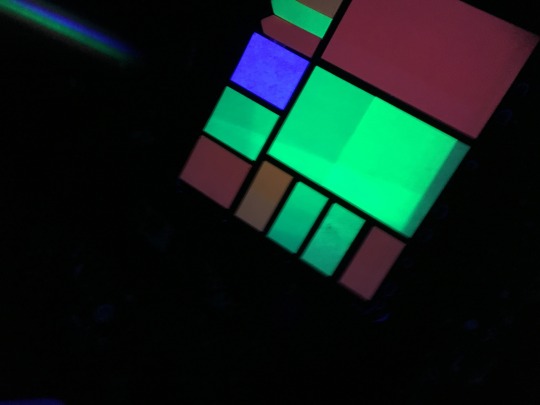

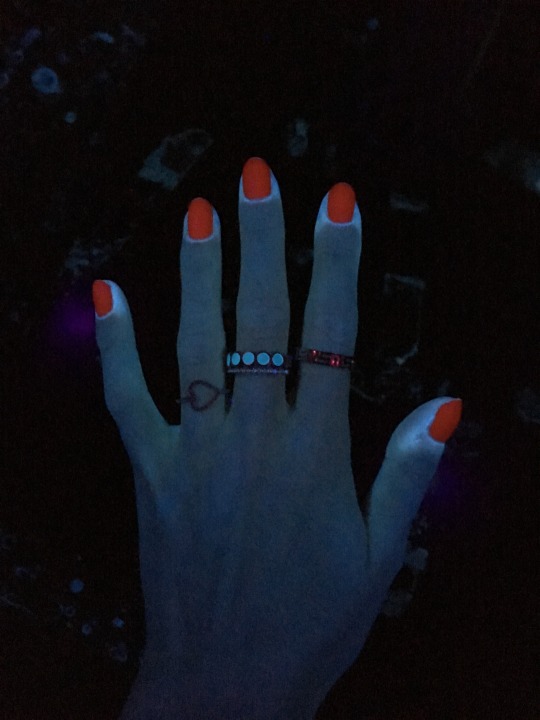
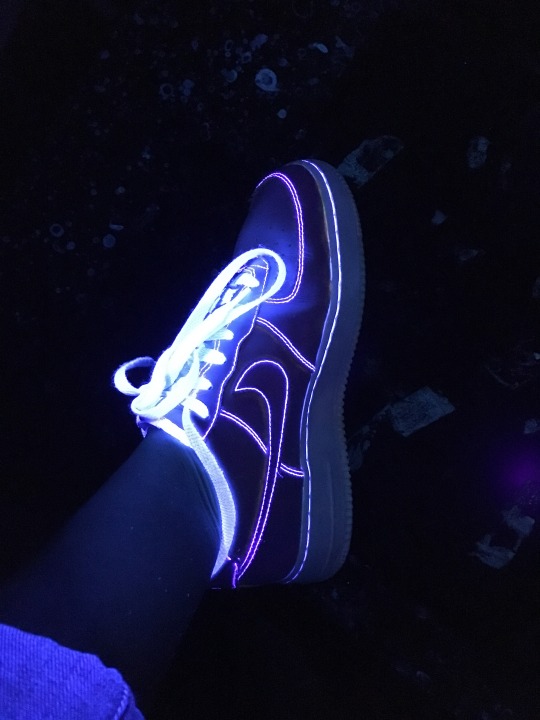
UV lamp
Beyond Perception: Art and Science collaboration
The human visible spectrum goes from around 390 nm to 700 nm wavelength (of light) or from 430 THz to 770 THz if we consider the frequency. This interval comprehend the range of colours we can normally see with our eyes, the seven rainbow colours to be more clear. When we talk about radiations, we intend those colours which have either a longer or shorter wavelength than the visible spectrum and so that we cannot perceive (like X-ray for example). In order to make them visible to us, we need to avail ourselves with special instruments able to capture them and make them detectable to the human eye.
Considering the UV rays it is quite simple: there is no need of any kind of filters or special technologies, you can simply use a UV lamp as light sources pointed at the object of your interest and a regular camera (SLR or DSLR) to record. What the UV lamp does, is to excite the fluorescent particles of the object making it fluorescent, so if the subject doesn’t have any fluorescent part, you won’t see any differences from a regular light sources. Therefore one either has a fluorescent material to analyse, or it is possible to make it fluorescent by contaminating it with some chemicals.
2 notes
·
View notes
Photo

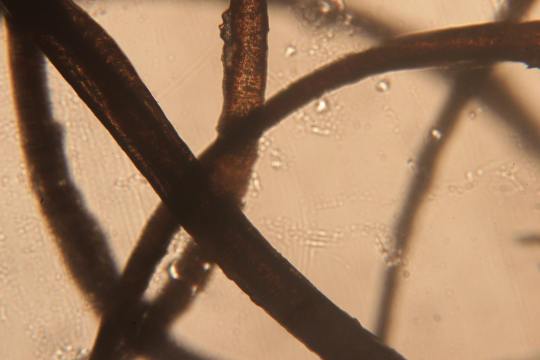

Microscope
Beyond Perception: Art and Science collaboration
The microscope was invented in 1590s by the Dutch spectacle-maker Zacharias Janssen and then developed by Galileo Galilei at the end of 1600. Nowadays there are several type of this machine, each of which able to detect a particular aspect of the object observed. What a microscope does is basically to magnify the image of an object through a very sophisticated lens. Before the invention of photography, a scientist had to replicate the image seen though the machine, by drawing it himself (the micrographia of Robert Hooke). Nowadays, despite the incredible development of both photography and microscopy, there are still some limits in shooting images directly from the enlarger. You can put your camera on top of the microscope by a special adapter, but you have to make use only of the machine’s light having no control on the aperture and so you’ll have a poor depth of field and the picture will result rather flat. Another limit is the focus, it is incredibly difficult to obtain high quality sharp images, the smallest movement of the camera or the machine will change the focus on the image and moreover, what you see though the camera is not actually what the camera will record, so you need to make adjustments based on intuition and experience.
Here I have analysed some common hair in the laboratory with a high power microscope.
0 notes